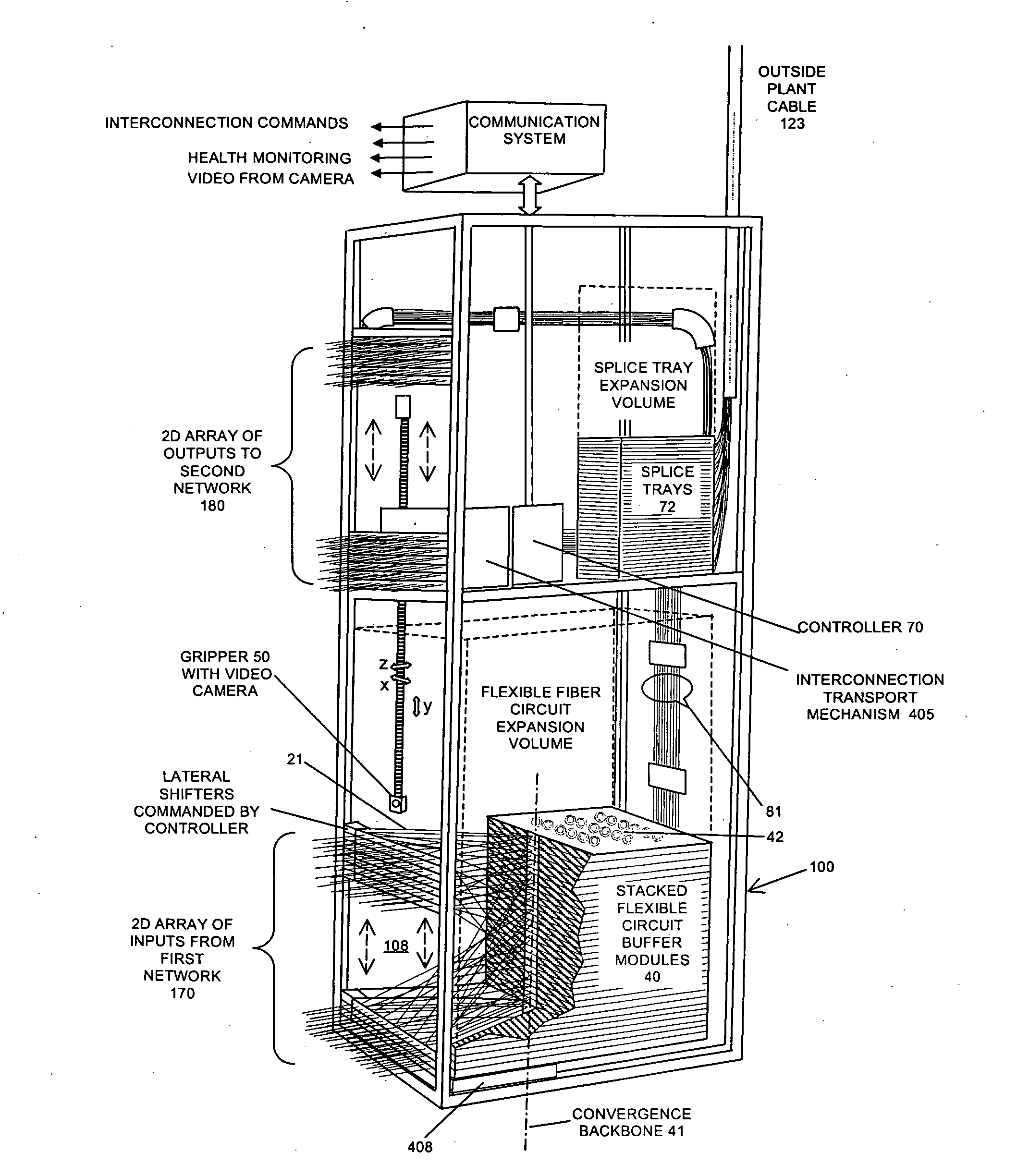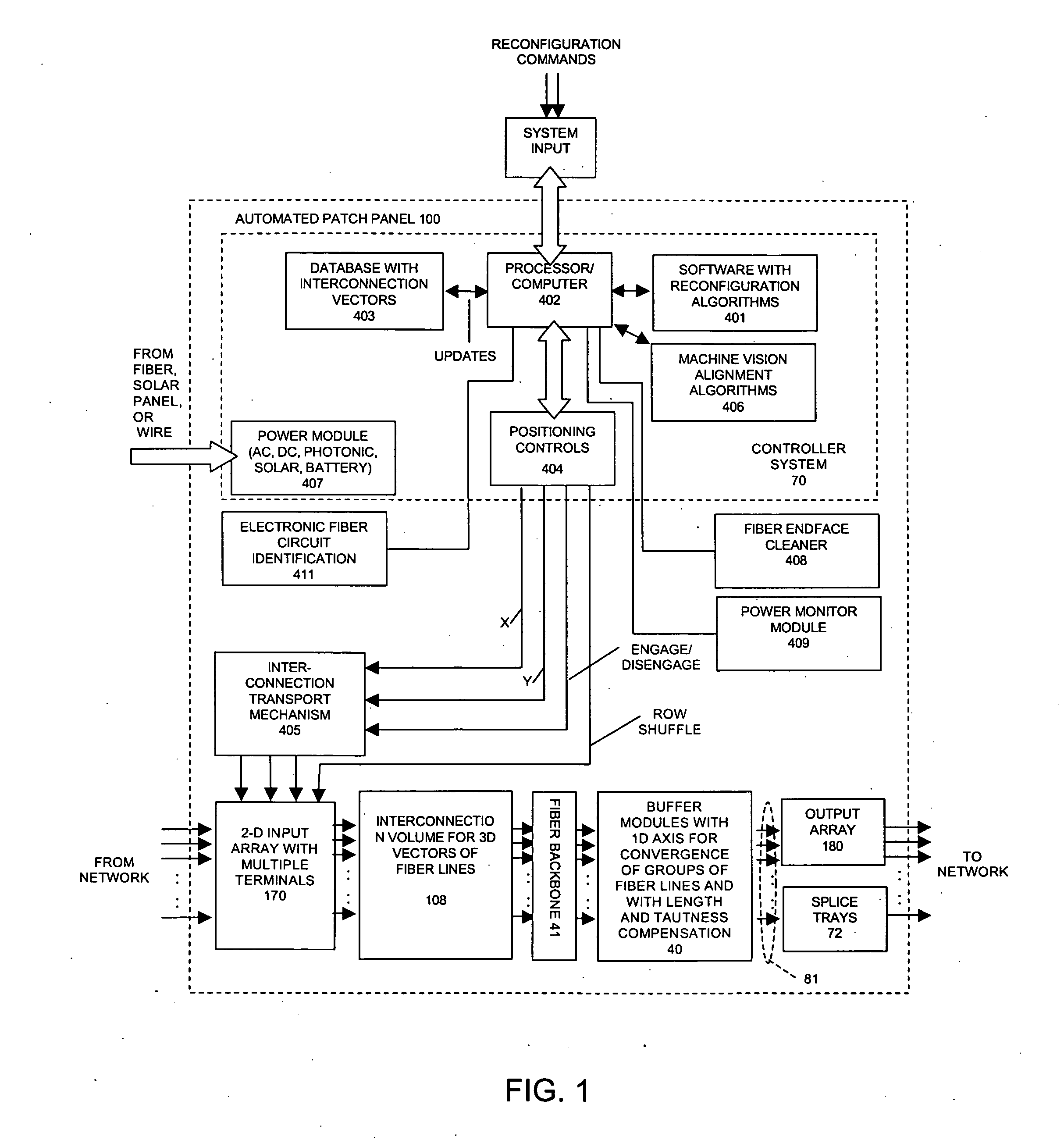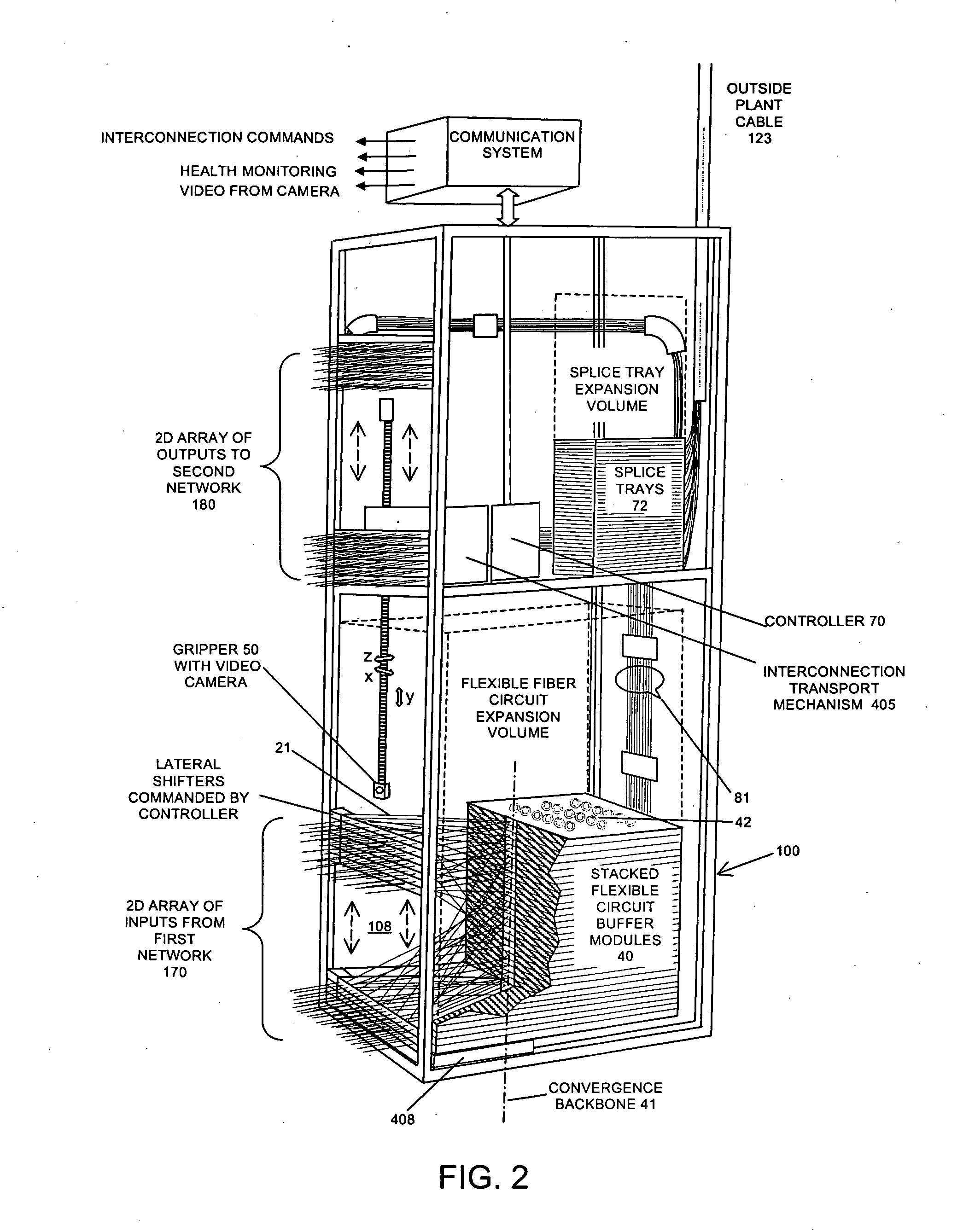Scalable and modular automated fiber optic cross-connect systems
a fiber optic cross-connect system, modular technology, applied in the field of optical systems, can solve the problems of limited optical performance and scalability, difficult task of allocating, reconfiguring and testing a fiber circuit within the network, and substantial alignment complexity, and achieves the effect of low cost, low cost and low cos
- Summary
- Abstract
- Description
- Claims
- Application Information
AI Technical Summary
Benefits of technology
Problems solved by technology
Method used
Image
Examples
example
Multiple Linear Actuation Columns
[0144]In an alternate example, one dedicated actuator per connector column is utilized. FIG. 20 schematically illustrates a side view of the approach, comprised of actuators interposed between all or a subset of the input terminal connector columns. Actuators 525 utilize, for example, motorized lead screws or ball screws 531 which raise or lower rotatable platforms 527. Motors 534 attached to outer sleeve of actuator and substantially surrounding ball screw 531 produce rotation of platforms 527. Actuators may remain within columnar interstitial spaces, or they may ascend vertically to exit the switch active volume.
[0145]Reconfiguration of fiber optic connectors 26 is achieved by multiple linear / rotary actuators with independent grippers. In this example, a fiber optic connector 26 and floating carrier 528 are shuffled between parallel and synchronized linear / rotary actuators 525-1, 525-2, 525-3. The carrier 528 is held in alternation by grippers 525-...
PUM
 Login to View More
Login to View More Abstract
Description
Claims
Application Information
 Login to View More
Login to View More - R&D
- Intellectual Property
- Life Sciences
- Materials
- Tech Scout
- Unparalleled Data Quality
- Higher Quality Content
- 60% Fewer Hallucinations
Browse by: Latest US Patents, China's latest patents, Technical Efficacy Thesaurus, Application Domain, Technology Topic, Popular Technical Reports.
© 2025 PatSnap. All rights reserved.Legal|Privacy policy|Modern Slavery Act Transparency Statement|Sitemap|About US| Contact US: help@patsnap.com



